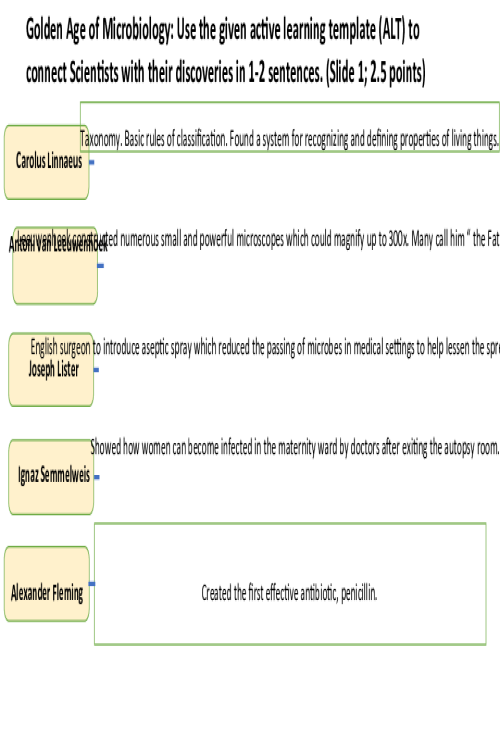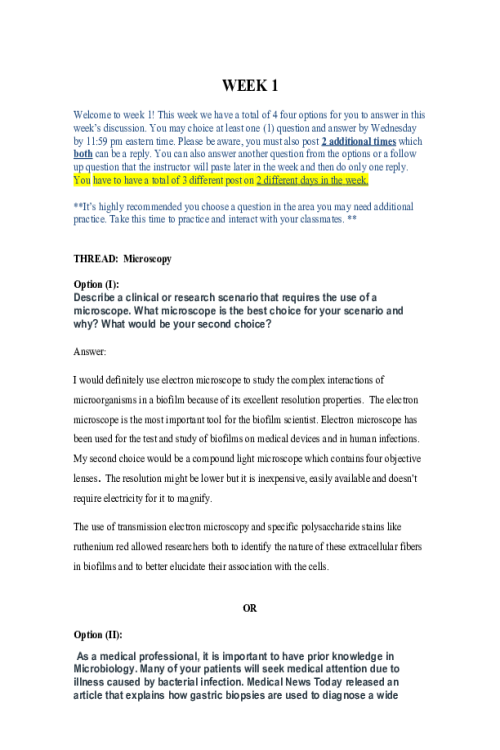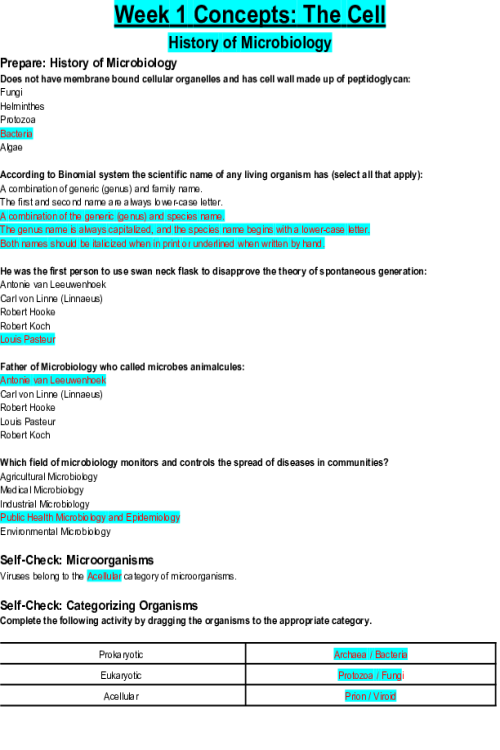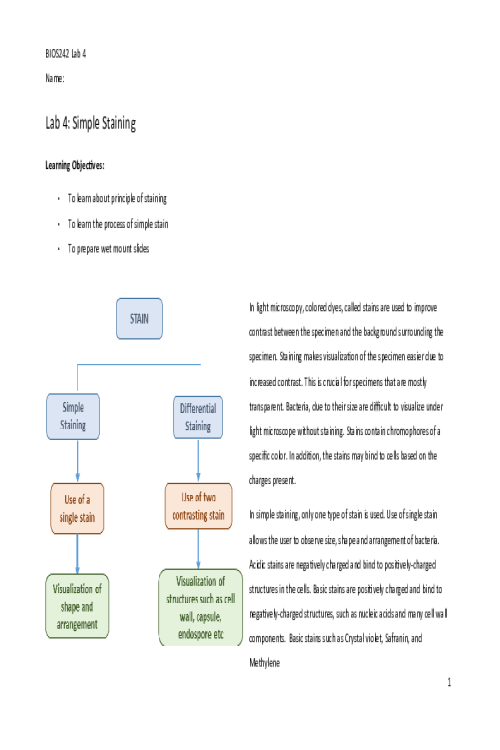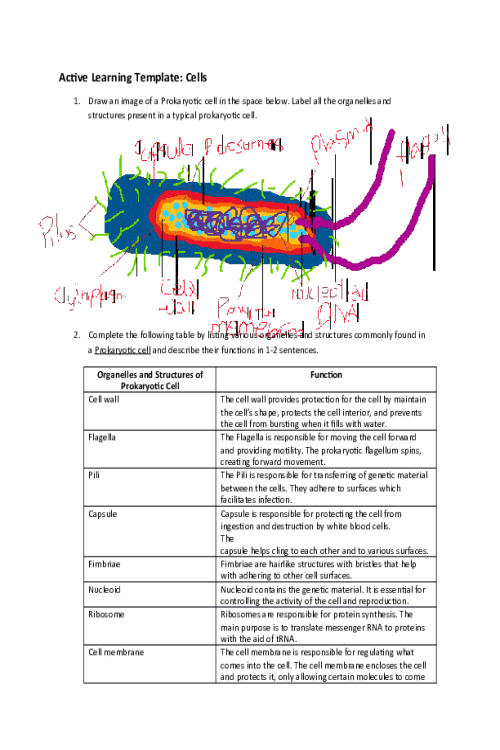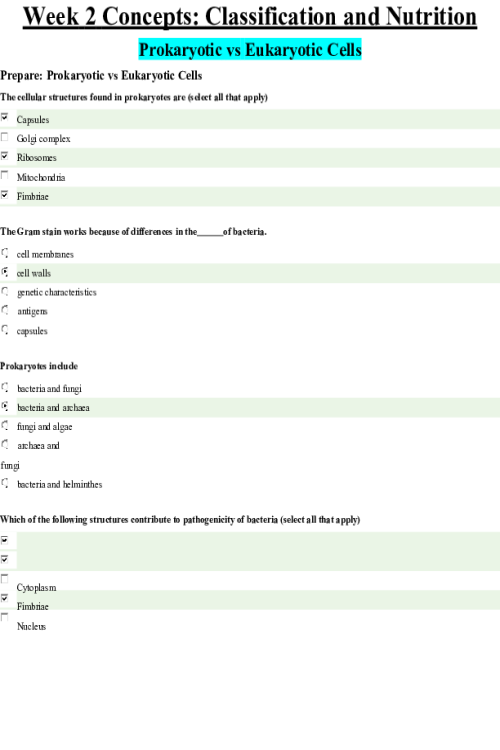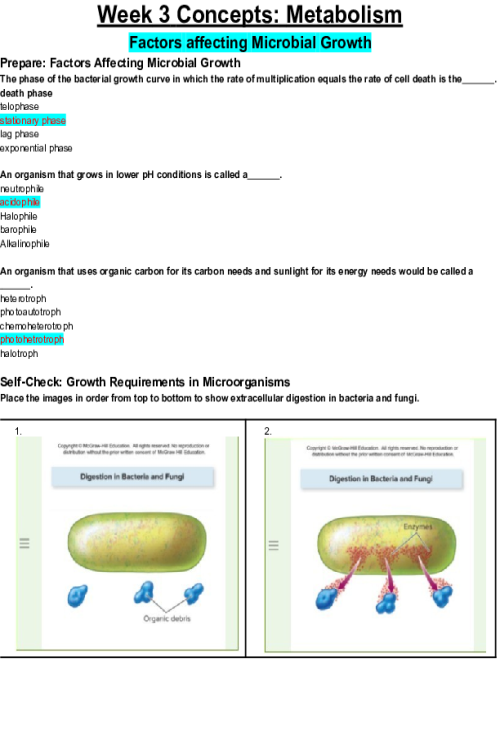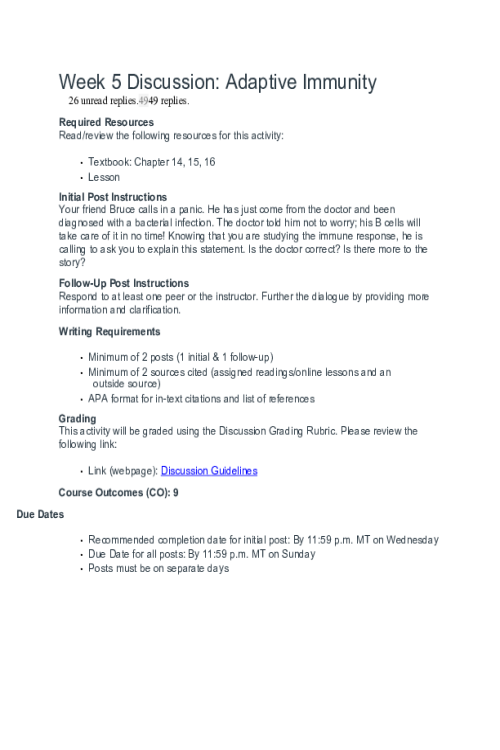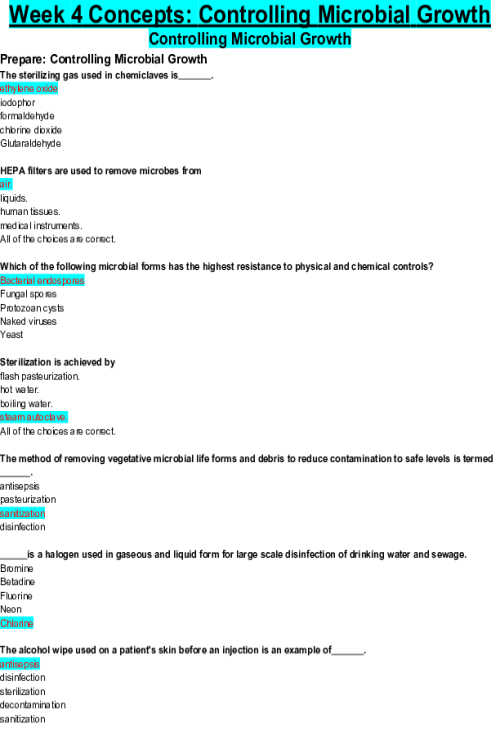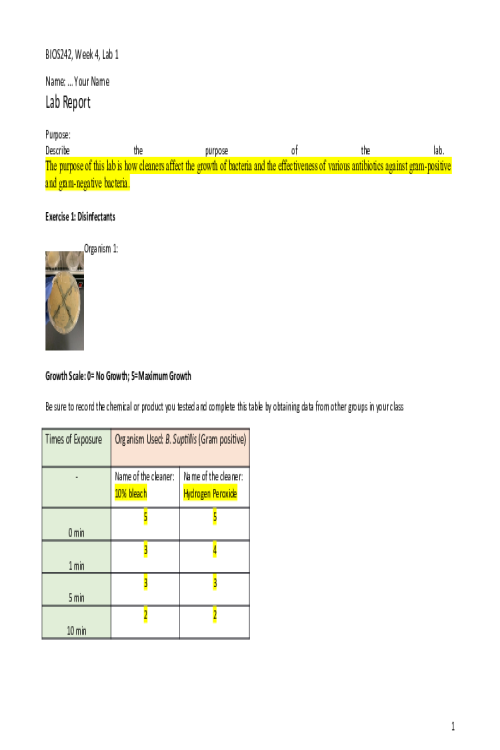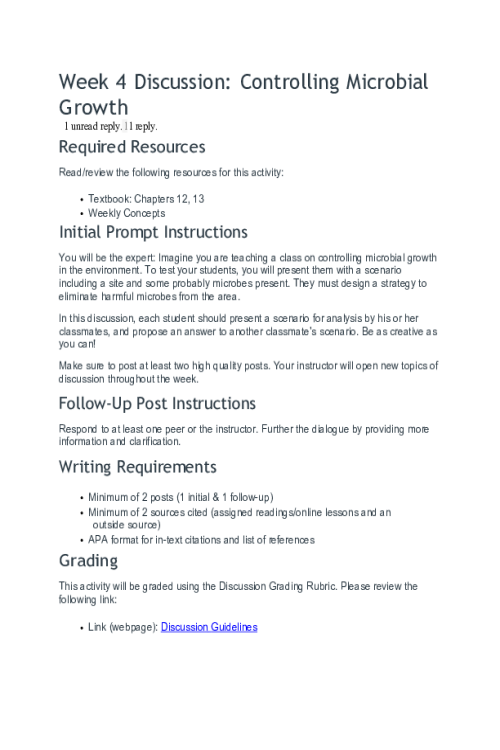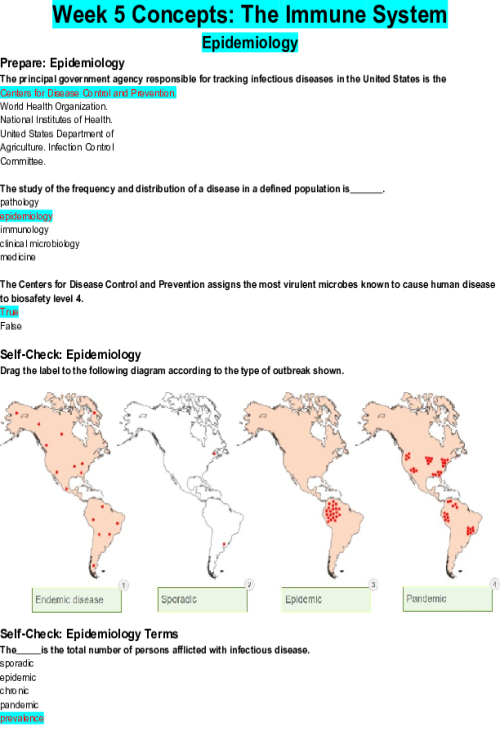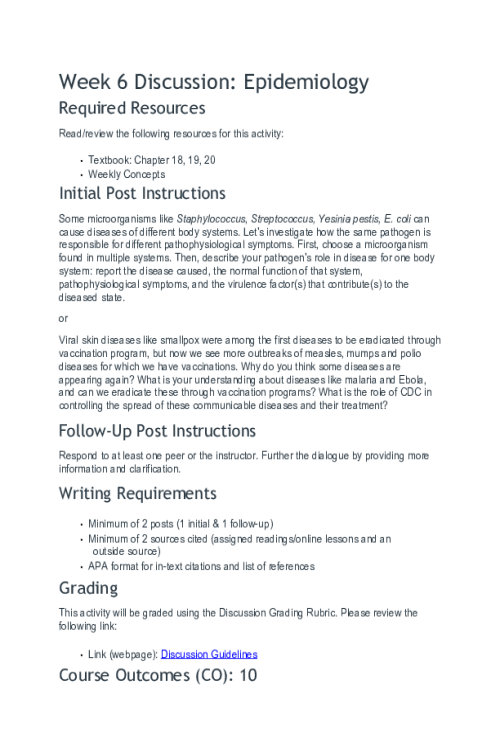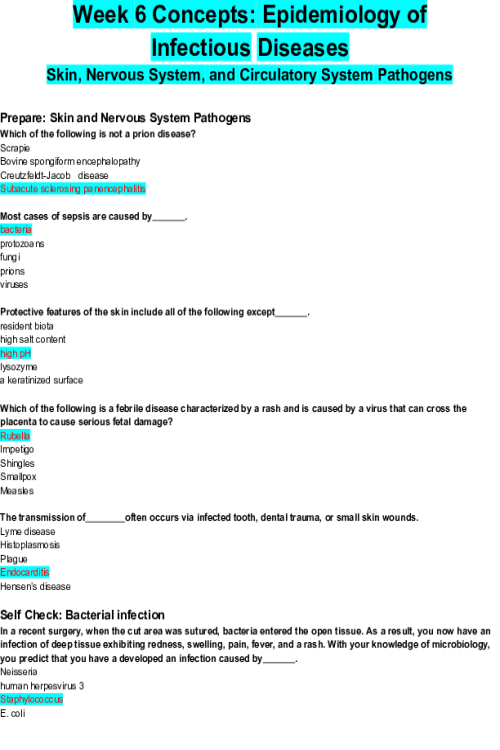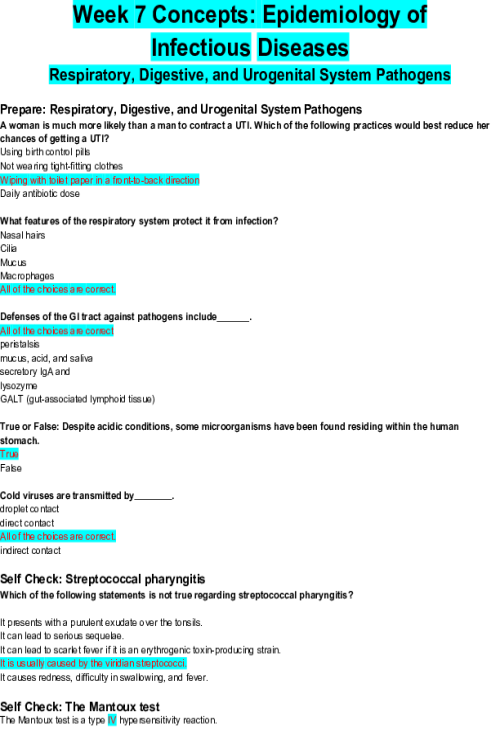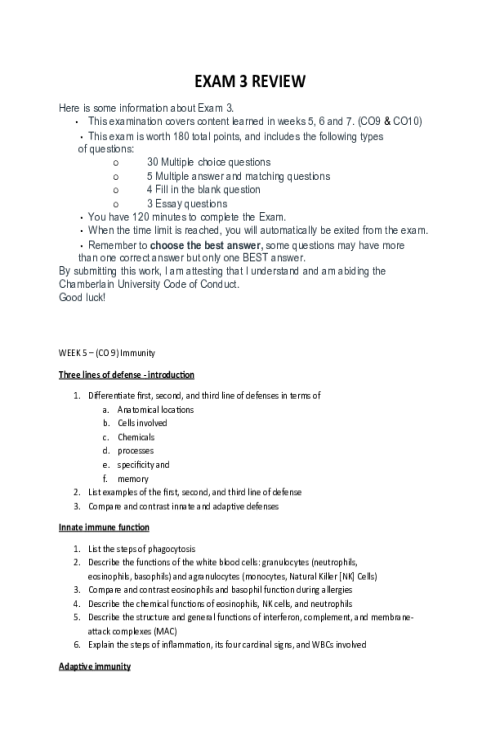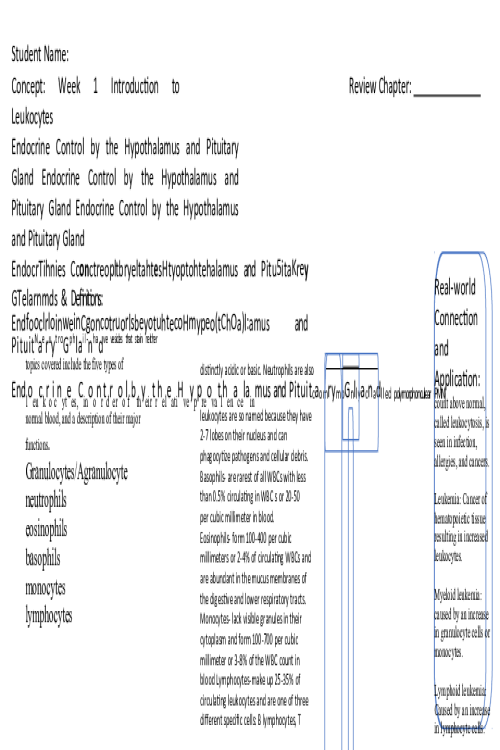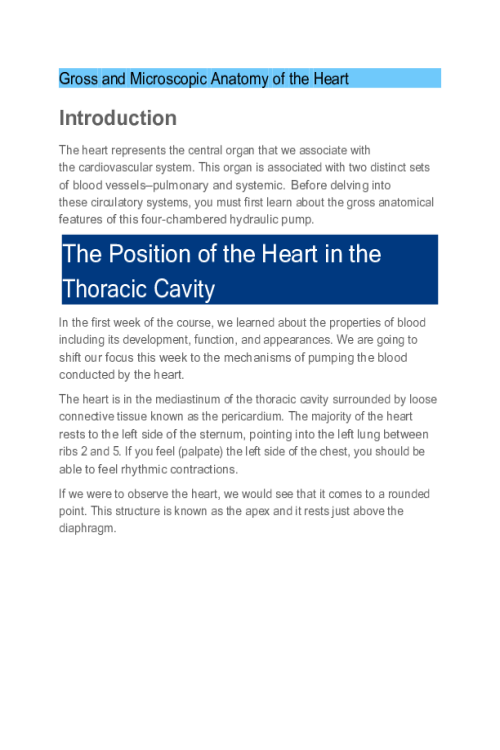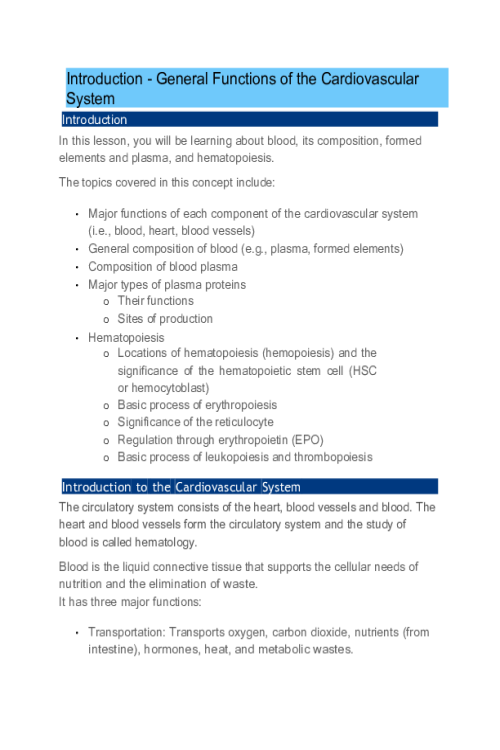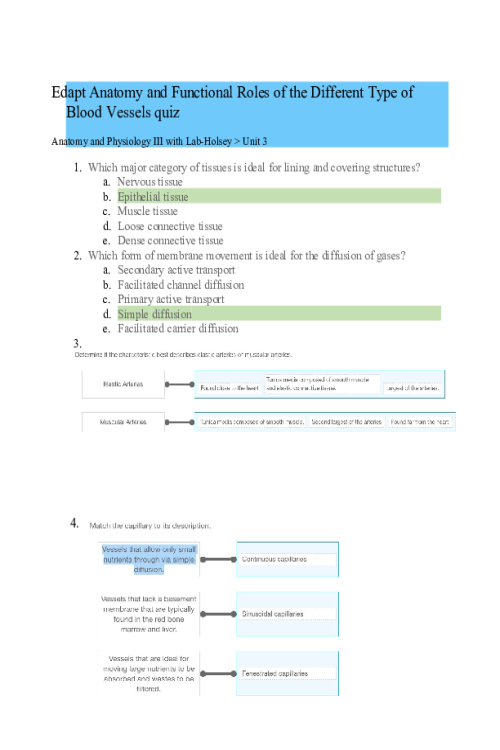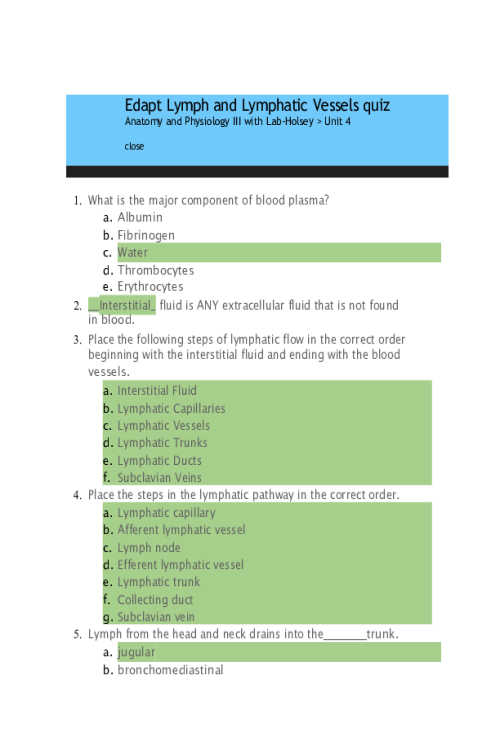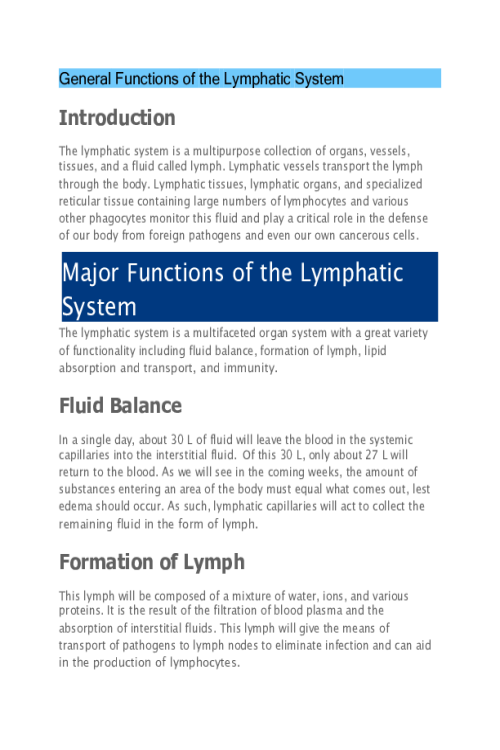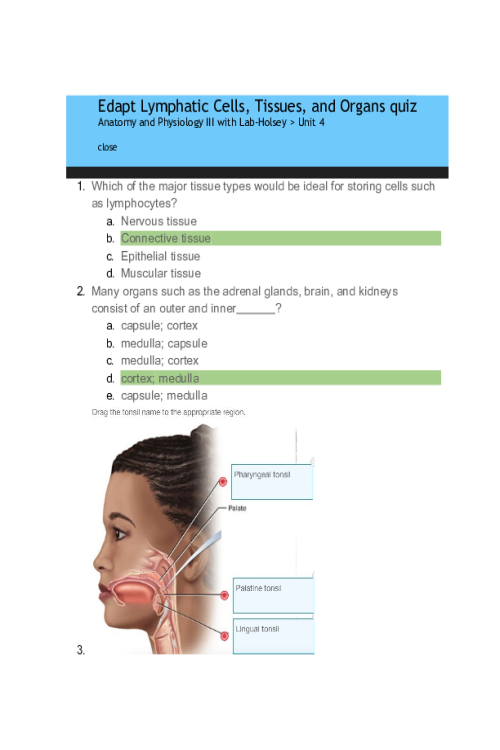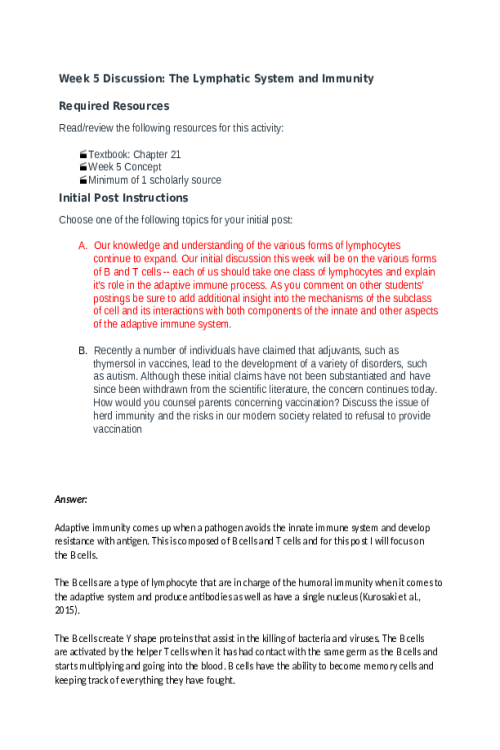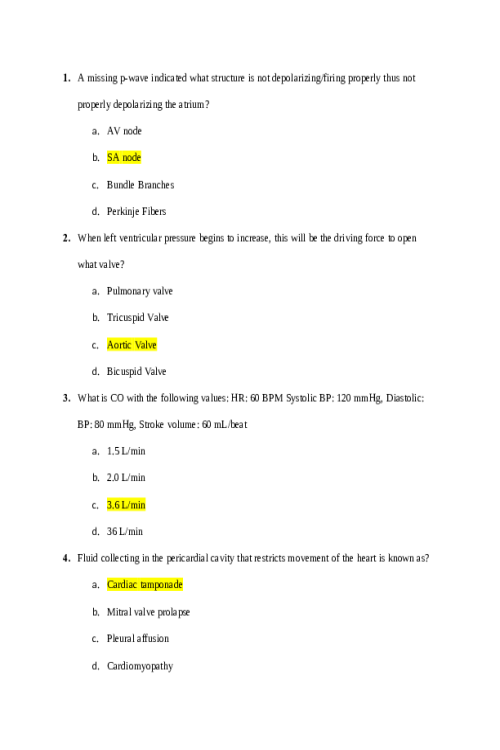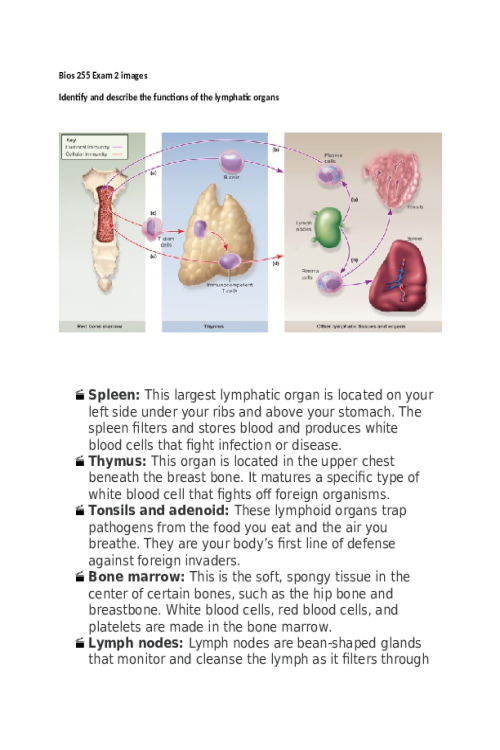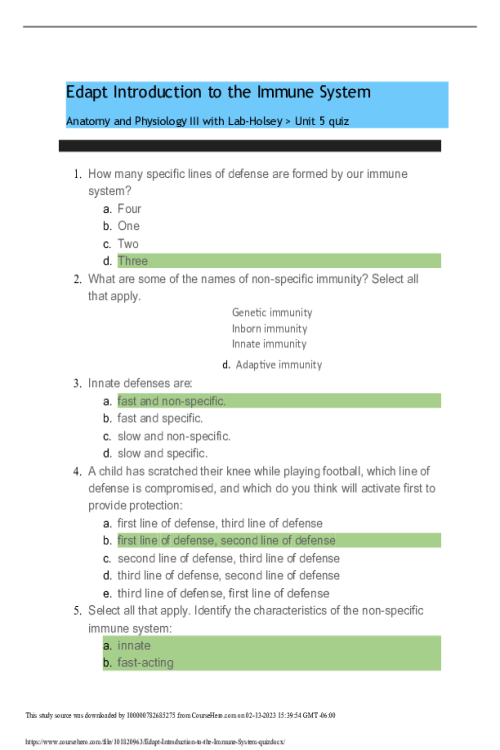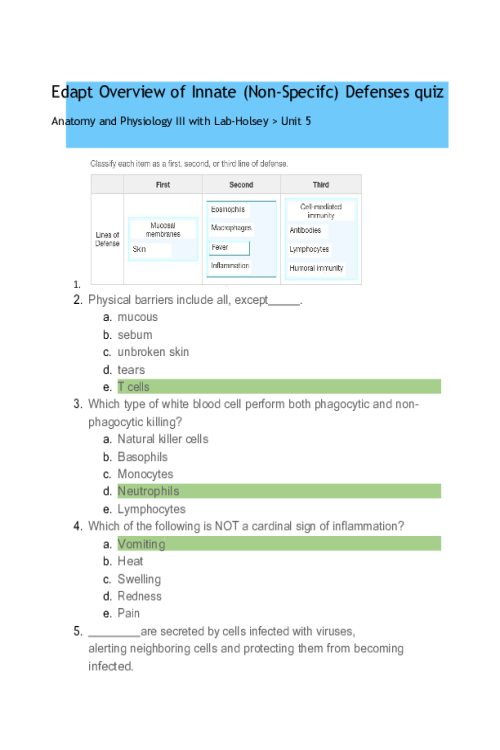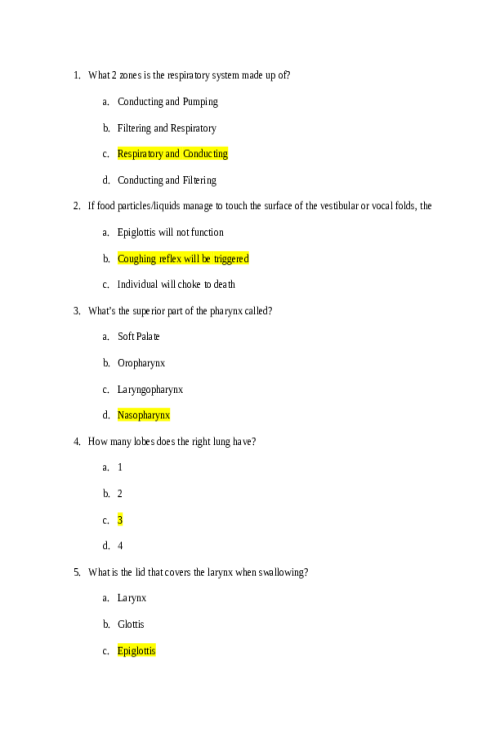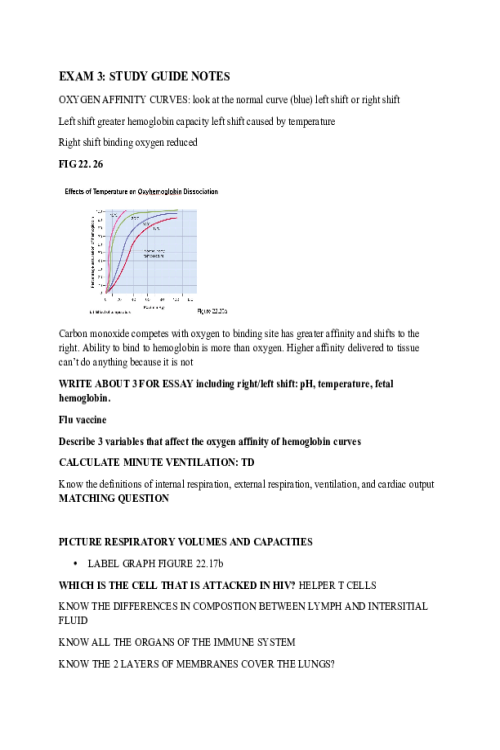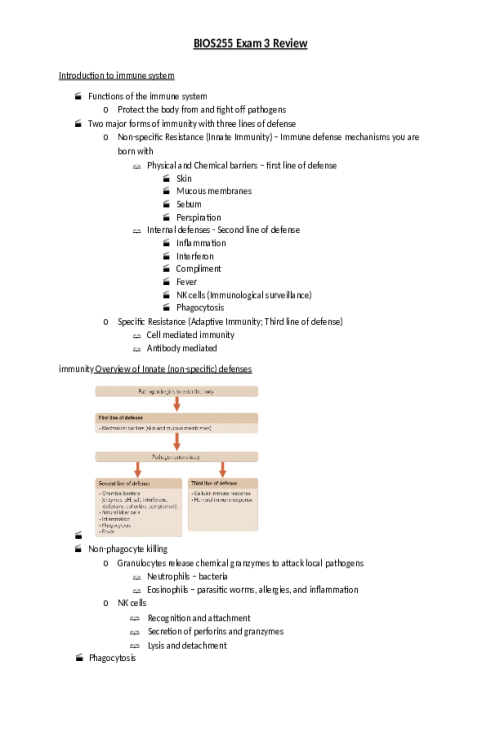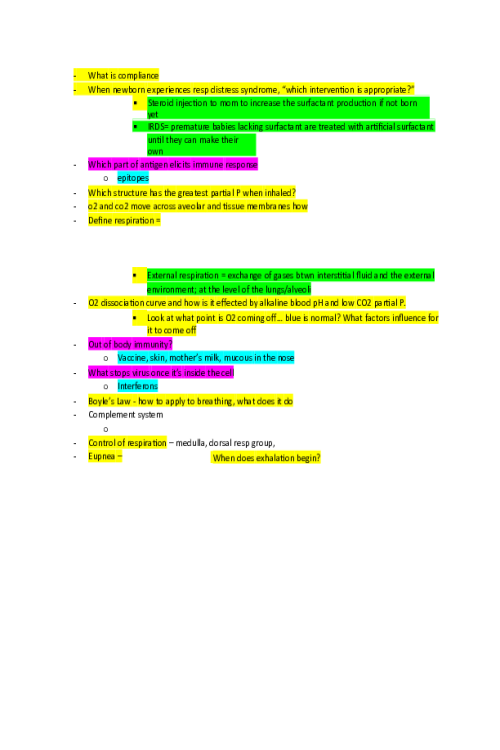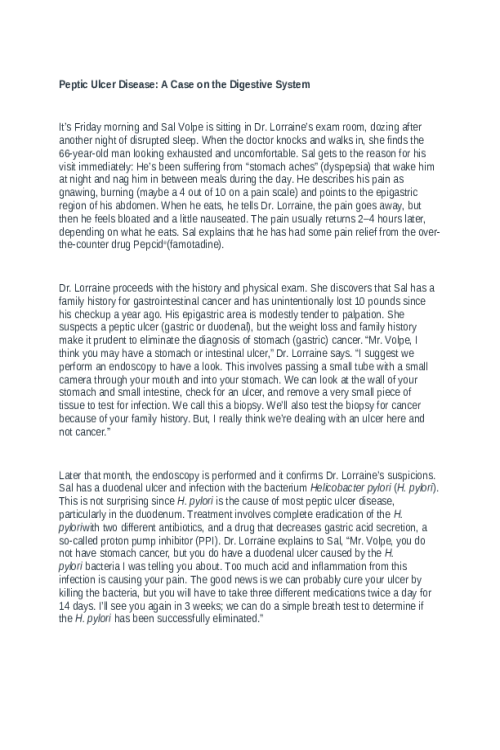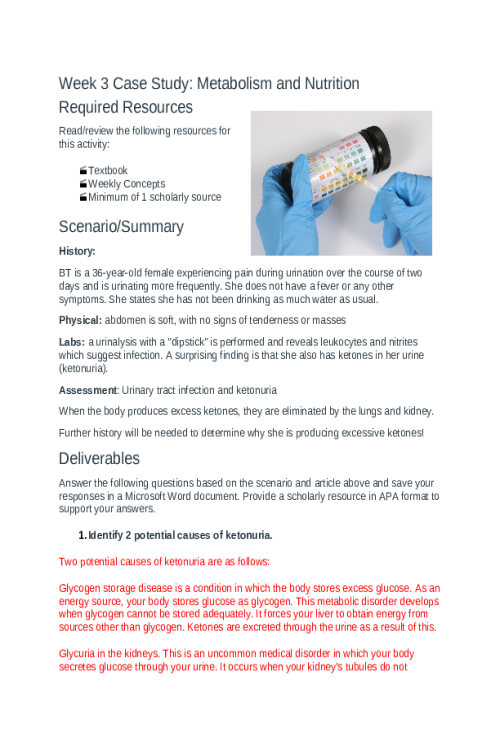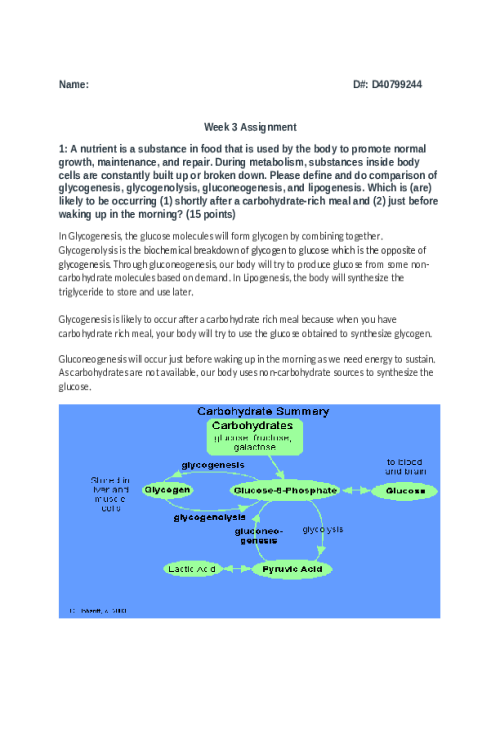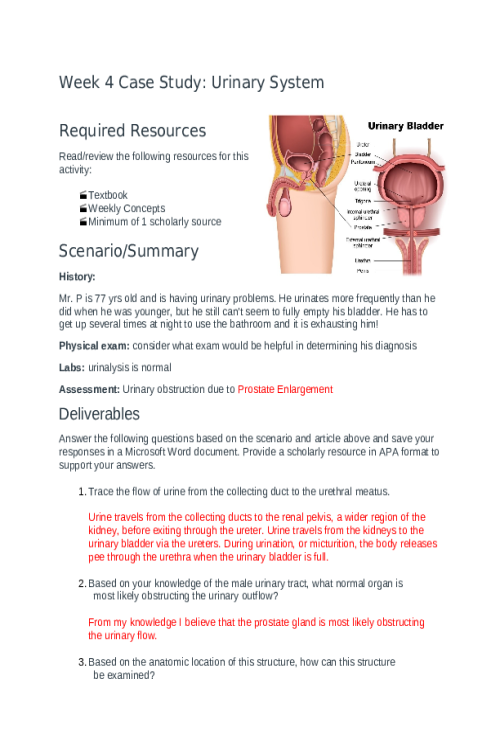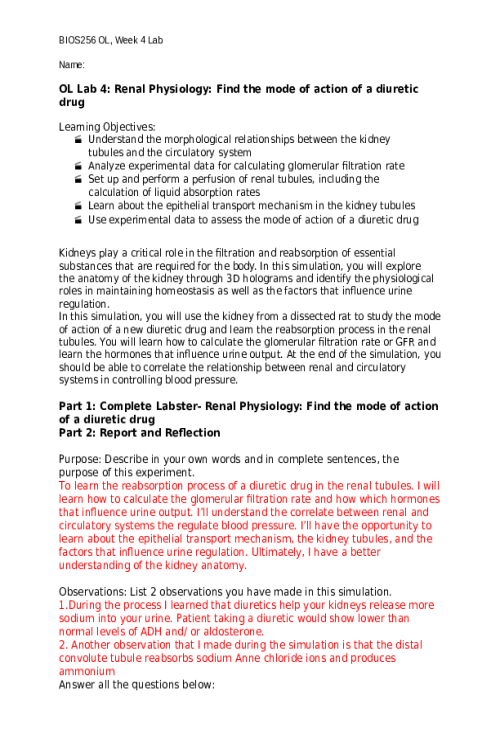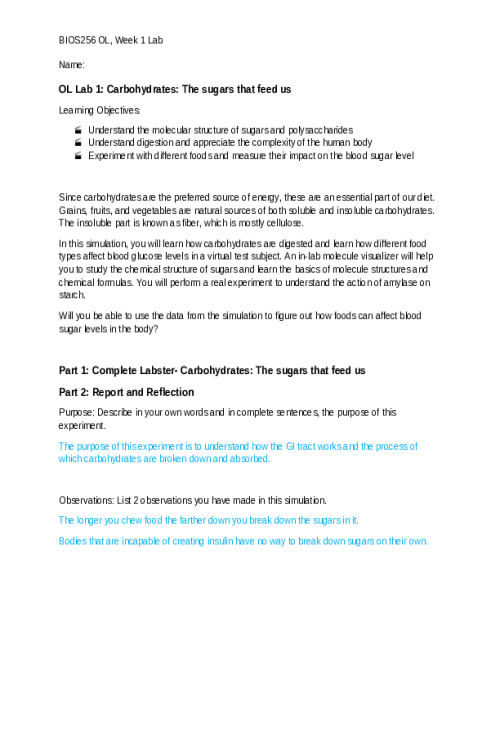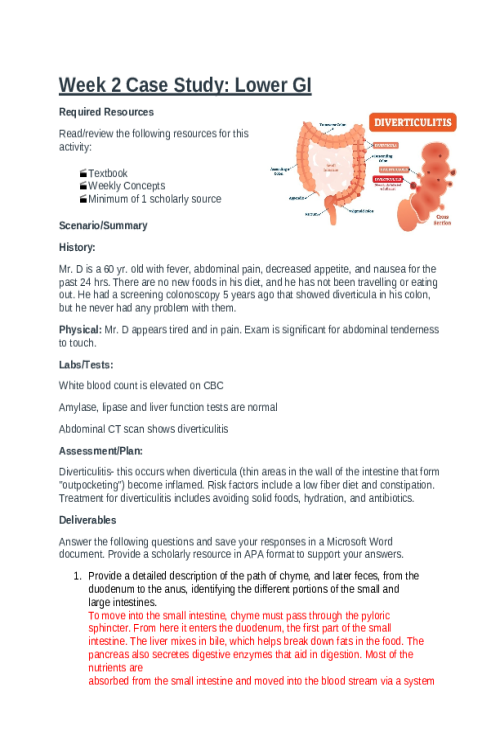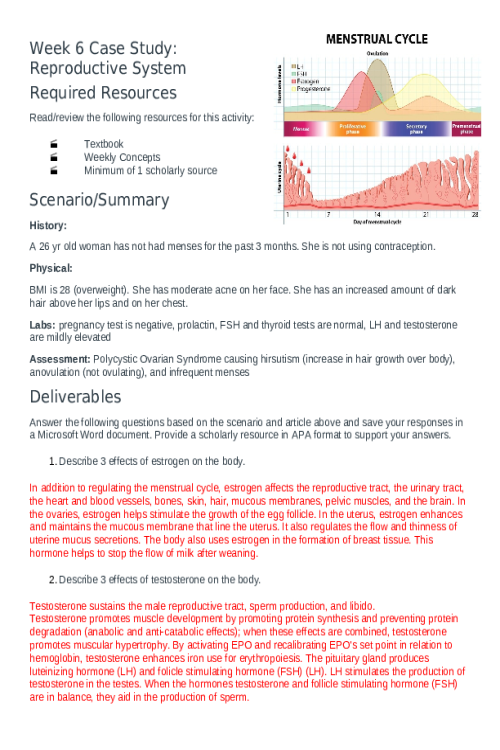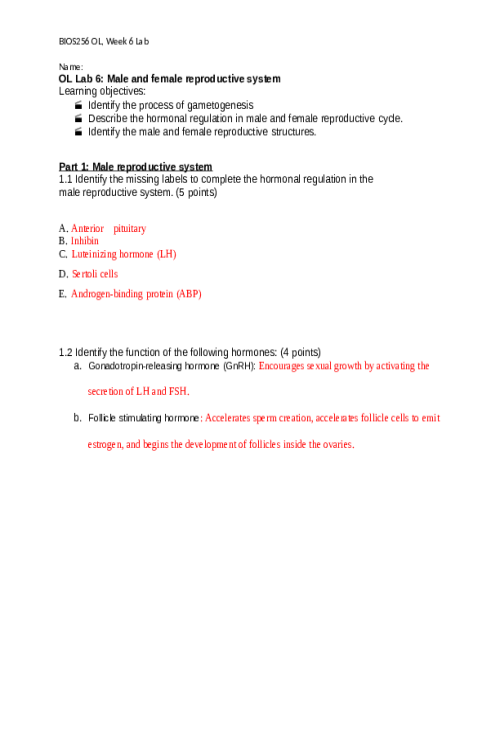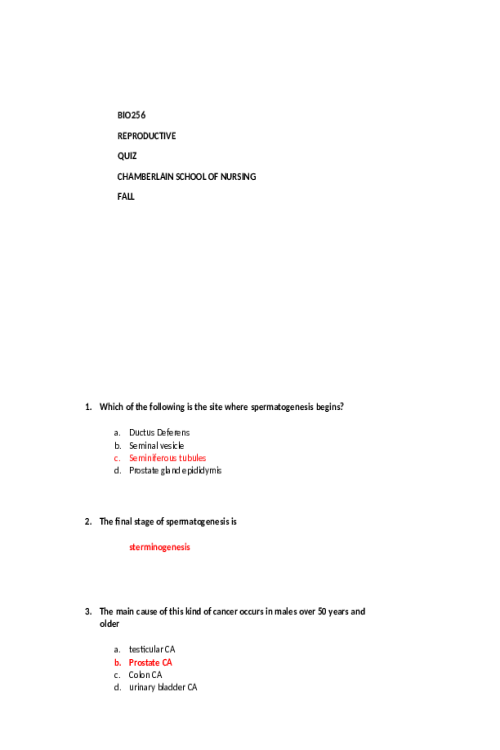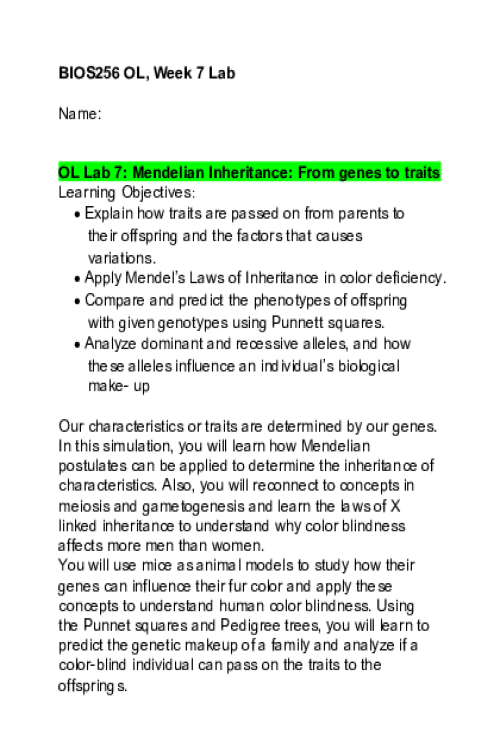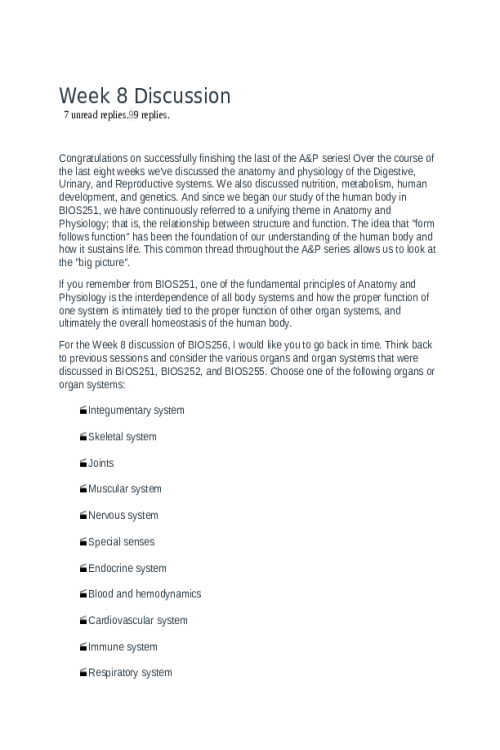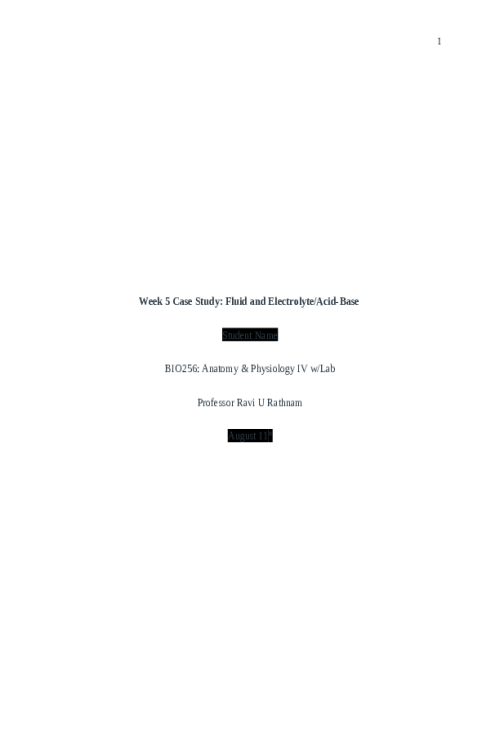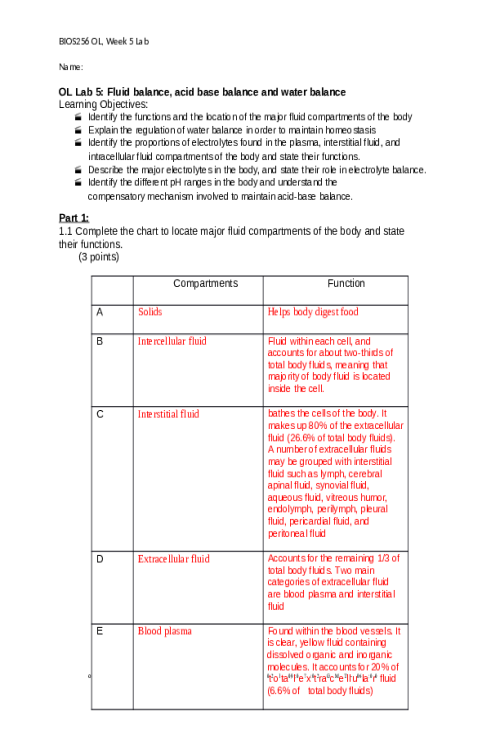BIOS 255 Week 5 Concepts; The Immune System
Introduction to the Immune System Introduction During this concept, you will be introduced to the immune system. The topics covered include: An introduction to innate (non-specific) and adaptive (specific) immune responses. Compare and contrast innate (non-specific) with adaptive (specific) defenses. Define immunity and the immune system. Describe the roles of the various types of leukocytes in innate (non- specific) and adaptive (specific) immune responses. Explain the ways in which the innate (non-specific) and adaptive (specific) immune responses cooperate to enhance the overall resistance to disease. An Introduction to the Immune System The body's ability to maintain homeostasis is highly dependent on its ability to fight off pathologic agents. Immunity is our body’s ability to ward off the pathogens that produce disease. The protective cells, chemicals, and physical barriers that keep us safe from invading pathogens form the immune system of our body. These are widely distributed with the highest numbers present in the lymphatic system – lymph nodes, spleen, and lymphatic vessels to name few. There are two major forms of immunity with three lines of defense: Non-specific Resistance (Innate Immunity): Fast-acting defense mechanisms that provide general protection (non-specific) against invasion by a wide range of pathogens. Also called inborn/ native/ genetic immunity as it is present at birth. Non-specific defense includes both first and second line of defense: First line of defense: Physical and chemical barriers like skin, mucus membranes, and sebum that block the invasion through exposed epithelia. Second line of defense: Internalized system of protective cells and processes that work to prevent pathogens entering the body. Leukocytes like neutrophils, eosinophils can destroy pathogens in both phagocytic and non-phagocytic killing, while macrophages perform phagocytic killing only. A differential count of leukocytes can help in identifying infectious agents (bacterial, viral. or parasites). Some processes that form the second line of defense are: Inflammation and fever are non-specific responses activated to enhance the activity of leukocytes. Interferons are chemical messengers released by cells attacked by viruses to activate defense mechanisms in healthy in nearby healthy cells. Complement system is a set of proteins activated via three different pathways that target and destroy the cell wall of pathogens. Specific Immunity (Adaptive Immunity): Directed slow responses by specialized lymphocytes that recognize specific foreign substances (antigens) and develops memory of those antigens. A slow, uniquely tailored response to a specific pathogen based on antigen identification hence the name adaptive or acquired immunity. Adaptive immunity forms the third line of defense, which includes cell-mediated and antibody-mediated responses that provide long-term specific immunity. Innate Immunity Adaptive Immunity Specificity and Memory Non-specific and no memory. Specific recognizes specific antigens. Response Rate Fast: Immediate, up to several hours. Slower: Several hours to several days. Component s Skin, mucus membranes, and the chemicals associated with these. Leukocytes: Granulocytes and macrophages. Processes: Inflammation, fever, interferons, and the complement system. T and B lymphocytes, macrophages, dendritic cells. 914400135656 Overview of Innate (Non-Specifc) Defenses Introduction During this concept, you will be introduced to innate (non-specific) defenses. The topics covered include: Surface membrane barriers and their physical, chemical, and microbiological mechanisms of defense. Diapedesis, chemotaxis, opsonization, and membrane attack complex, and their importance for innate defenses., The steps involved in phagocytosis and examples of important phagocytic cells in the body. The functions of natural killer cells, complement, and interferon as antimicrobial chemicals. The role of pattern-recognition receptors in innate defenses. The mechanisms that initiate inflammation, The cells and chemicals involved in the inflammatory process, The causes of the four cardinal signs of inflammation, The benefits of inflammation, The mechanism of fever, including the role of pyrogens, The benefits of fever. The Body’s First and Second Lines of Defense The Body’s First Line of Defense The body’s first line of defense include mechanical (aka physical) and chemical barriers. The epidermis and mucus membranes form the defense layers of our body which prevent the entry of microorganisms. Epidermis: The top layers of the epidermis are rich in keratin protein which provides a tough barrier and prevents the entry of pathogens. These are shed frequently to wash off the pathogens that may have colonized. Epidermal dendritic cells phagocytize pathogens. Skin has chemicals, like demicidin, that defend against pathogens. Keratinocytes produce antimicrobial peptides called defensins. Perspiration: The high-level of salt in sweat inhibits pathogen growth. Sweat creates acidic environment. Sweat has lysozyme which destroys bacteria cell walls. Sebum Helps keep skin pliable, reducing the chances of tear and abrasions which can compromise this barrier Lowers skin pH to a level inhibitory to many bacteria Mucus membrane: Digestive, respiratory, urinary, and reproductive tracts are open to the exterior and can act as a portal of entry for pathogens. The upper layer of mucus membrane is made up of tightly packed cells that continuously shed. Mucus produced by cells in the epithelial layer of the mucus membrane trap pathogens. Hair in the nasal cavity filters inspired air of large particles. Cilia, found on pseudostratified ciliated epithelium of the respiratory tract, move mucus (laden with microbes and particles) to where it may be expelled by coughing or sneezing or where it may be swallowed. Urine and secretions from the stomach and vagina are acidic and prevent microbial growth. The flowing action of urine, swallowing, defecation, and vomiting are additional processes that retard growth and enhance the elimination of microbes. The lacrimal apparatus produces tears that wash away and clear irritating substances and microbes. Tears, like sweat, also contain lysozyme. The Body’s Second Line of Defense When the body’s physical and chemical barriers fail, the second line of defense comes into action. This defense line is composed of leukocytes that can do both phagocytic and non- phagocytic killing, antimicrobial proteins (interferons INFs and complement proteins) and processes like fever and inflammation. 1078699108978 Non-Phagocytic Killing Non-phagocytic killing: Granulocytes, specifically neutrophils and eosinophils, along with natural killer (NK) cells destroy pathogens by releasing chemicals, such as perforins and granzymes, in their vicinity. Neutrophils are attracted towards bacteria and, when in the immediate vicinity, they degranulate releasing superoxide and hypochlorite (active component of bleach) to destroy the pathogen. They are the first to arrive as a response to injury. The kkilling zone created by this burst also destroys the neutrophils but is more rapid and efficient in clearing pathogens than the phagocytic action of this granulocyte. High numbers of eosinophils are found in mucus membranes and are active during parasitic worm infections, allergies, and inflammatory reactions.. Parasitic worms, too large to be destroyed by phagocytosis, are killed by lysozyme, hypochlorite, and superoxide released by these granulocytes. Eosinophils also release a histaminase enzyme that suppresses the action of histamine from mast cells. This is important to keep the inflammatory responses in control and localized to the appropriate region. Lymphocytes have three types: T and B lymphocytes and natural killer (NK) cells. The first two lymphocytes have special markers on their membrane to respond to specific antigens, thus providing adaptive immunity and do not play a role in innate immunity. NK cells lack the specific markers of T and B lymphocytes, they attack a variety of targets, but are especially good at identifying and attacking cancerous cells and cells infected by viruses. NK cells release perforins, which punch holes in the target cell’s membrane, and granzymes, which induce programmed cell death (apoptosis). Phagocytic Killing Phagocytic killing: The three leukocytes involved in phagocytic killing are monocytes (become macrophages), neutrophils, and eosinophils. The action of these cells is enhanced by fever. Monocytes are the largest of all leukocytes and have a kidney- or u- shaped nucleus and are widely distributed. From blood, these agranulocytes migrate to connective tissues and become macrophages. The three specialized macrophages are microglial cells in nervous tissue, alveolar macrophages in the l
Related Products
BIOS 242 Week 1 Assignment; Lab 1 of 14 Onsite - Culture Transfer Techniques
Contributor: Matthew Lillard
$10.00
BIOS 242 Week 1 Assignment; Lab 2 of 14 Onsite - Isolation of Pure Cultures
Contributor: Matthew Lillard
$10.00
BIOS 242 Week 2 Assignment; Lab 3 of 14 Onsite; Microscopy Observation of Cells
Contributor: Matthew Lillard
$10.00
BIOS 242 Week 2 Discussion; Characteristics of Prokaryotes and Eukaryotes Cells
Contributor: Matthew Lillard
$10.00
BIOS 242 Week 2 Assignment; Concepts; Classification and Nutrition
Contributor: Matthew Lillard
$10.00
BIOS 242 Week 3 Assignment; Lab 6 of 14 Onsite; Carbohydrate Fermentation
Contributor: Matthew Lillard
$10.00
BIOS 242 Week 3 Discussion; Culturing Microorganisms - Halobacterium noricense
Contributor: Matthew Lillard
$10.00
BIOS 242 Week 3 EXAM 1. Chapters 1, 3, 4, 5, 6, 9 - Multiple Choice Review Questions
Contributor: Matthew Lillard
$10.00
BIOS 242 Week 3 Assignment; Lab 5 of 14 Onsite; Differential Staining
Contributor: Matthew Lillard
$10.00
BIOS 242 Week 5 Assignment; Lab 10 of 14 Onsite; How Germs Spread..
Contributor: Matthew Lillard
$10.00
BIOS 242 Week 5 Assignment; Lab 9 of 14 Onsite; Food Safety.docx
Contributor: Matthew Lillard
$10.00
BIOS 242 Week 4 Assignment; Concepts; Controlling Microbial Growth
Contributor: Matthew Lillard
$10.00
BIOS 242 Week 4 Assignment; Lab 7 of 14 Onsite; Disinfectants and Antibiotics
Contributor: Matthew Lillard
$10.00
BIOS 242 Week 4 Assignment; Lab 8 of 14 Onsite; Fomite Transmission
Contributor: Matthew Lillard
$10.00
BIOS 242 Week 6 Assignment; Pick Your Pathogen - Clostridium Perfringens
Contributor: Matthew Lillard
$10.00
BIOS 242 Week 6 Assignment; Concepts; Epidemiology of Infectious Diseases
Contributor: Matthew Lillard
$10.00
BIOS 242 Week 6 Assignment; Lab 11 0f 14 Onsite; Bacteria of the skin
Contributor: Matthew Lillard
$10.00
BIOS 242 Week 6 Assignment; Lab 12 0f 14 Onsite; Bacteria of Respiratory System
Contributor: Matthew Lillard
$10.00
BIOS 242 Week 7 Assignment; Lab 14 of 14 Onsite; Unknown Bacteria
Contributor: Matthew Lillard
$10.00
BIOS 242 Week 8 EXAM 3 Review. Chapters 14-23 (Excluding 16, 17)
Contributor: Matthew Lillard
$10.00
BIOS 242 Week 7 Assignment; Lab 13 of 14 Onsite; Bacteria of Digestive System
Contributor: Matthew Lillard
$10.00
BIOS 255 Week 1 Virtual Lab; Hematology Part I, Part II, Part III
Contributor: Chandler Hallow
$10.00
BIOS 255 Week 2 Virtual Lab; Cardiovascular Function during Exercise Part 1, Part II, Part III
Contributor: Chandler Hallow
$10.00
BIOS 255 Week 3 Concepts I The Cardiovascular System- Blood Vessels (Quiz)
Contributor: Matthew Lillard
$10.00
BIOS 255 Week 4 Assignment; Case Study I Natural Killer Cell Deficiency
Contributor: Matthew Lillard
$10.00
BIOS 255 Week 4 Concepts; The Lymphatic System (Edapt Lymph, Lymphatic Vessels Quiz)
Contributor: Matthew Lillard
$10.00
BIOS 255 Week 4 Concepts; The Lymphatic System (Edapt Lymphatic Cells, Tissues, Organs Quiz)
Contributor: Matthew Lillard
$10.00
BIOS 255 Week 5 Discussion; The Lymphatic System and Immunity; Option A
Contributor: Matthew Lillard
$10.00
BIOS 255 Week 5 Virtual Lab; Introduction to Immunology Part I, Part II
Contributor: Matthew Lillard
$10.00
BIOS 255 Week 5 Assignment; Case Study I Hypersensitivity Reactions
Contributor: Matthew Lillard
$10.00
BIOS 255 Week 5 Concepts; The Immune System (Edapt Immune System Quiz)
Contributor: Matthew Lillard
$10.00
BIOS 255 Week 5 Concepts; The Immune System (Edapt Innate Defenses Quiz)
Contributor: Matthew Lillard
$10.00
BIOS 256 Week 2 Discussion; Peptic Ulcer Disease; A Case on the Digestive System.
Contributor: Daniel Sturridge
$10.00
BIOS 256 Week 2 OL Lab 2; Intestinal Glucose Transport; Study a mouse intestine model todiagnose an infant
Contributor: Daniel Sturridge
$20.00
BIOS 256 Week 3 Discussion; Glycogenesis, glycogenolysis, gluconeogenesis, and lipogenesis
Contributor: Daniel Sturridge
$10.00
BIOS 256 Week 3 OL Lab 3; Cellular Respiration; Measuring energy consumption during exercise
Contributor: Daniel Sturridge
$20.00
BIOS 256 Week 4 OL Lab 4; Renal Physiology; Find the mode of action of a diuretic drug
Contributor: Daniel Sturridge
$20.00
BIOS 256 Week 1 OL Lab 1; Carbohydrates The sugars that feed us
Contributor: Daniel Sturridge
$20.00
BIOS 256 Week 2 Discussion; Peptic Ulcer Disease; A Case on the Digestive System..
Contributor: Daniel Sturridge
$10.00
BIOS 256 Week 6 Discussion; male and female reproductive systems
Contributor: Daniel Sturridge
$10.00
BIOS 256 Week 7 OL Lab 7; Mendelian Inheritance From genes to traits
Contributor: Daniel Sturridge
$20.00
BIOS 256 Week 5 Discussion; Fluid balance, electrolyte balance, and acid-base balance
Contributor: Daniel Sturridge
$10.00
BIOS 256 Week 5 OL Lab 5; Fluid balance, acid base balance and water balance
Contributor: Daniel Sturridge
$20.00
